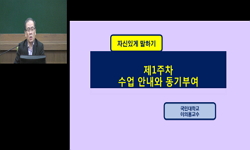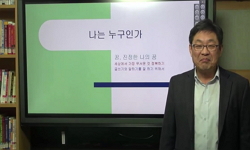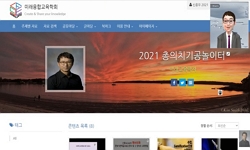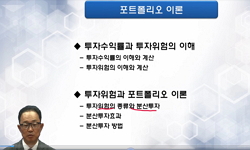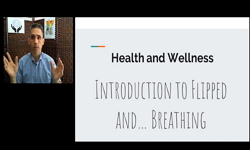본 연구에서는 말하기 교육의 궁극적인 목적이 실제 상황에서의 말하기 능력을 신장시키고자 하는 것이지만 교실 현장에서는 그 지도와 평가가 따로 존재하고 있다는 문제를 인식하고 교실...
http://chineseinput.net/에서 pinyin(병음)방식으로 중국어를 변환할 수 있습니다.
변환된 중국어를 복사하여 사용하시면 됩니다.
- 中文 을 입력하시려면 zhongwen을 입력하시고 space를누르시면됩니다.
- 北京 을 입력하시려면 beijing을 입력하시고 space를 누르시면 됩니다.
포트폴리오 평가를 통한 말하기 능력 신장 방안 연구 = (A) Study on Method for Speaking Ability Extension though Portfolio Assessment
한글로보기https://www.riss.kr/link?id=T9127865
- 저자
-
발행사항
진주 : 진주교육대학교 교육대학원, 2003
-
학위논문사항
학위논문(석사) -- 진주교육대학교 교육대학원 , 초등국어교육전공 , 2003. 8
-
발행연도
2003
-
작성언어
한국어
-
주제어
포트폴리오 ; 포트폴리오 평가 ; 말하기 ; 말하기 능력 신장 방안
-
KDC
375.47 판사항(4)
-
발행국(도시)
경상남도
-
형태사항
vi, 117p. : 삽도 ; 26cm
-
일반주기명
참고문헌 수록
- 소장기관
-
0
상세조회 -
0
다운로드
부가정보
국문 초록 (Abstract)
본 연구에서는 말하기 교육의 궁극적인 목적이 실제 상황에서의 말하기 능력을 신장시키고자 하는 것이지만 교실 현장에서는 그 지도와 평가가 따로 존재하고 있다는 문제를 인식하고 교실현장에서 말하기 교육의 목표를 실천하고 실제상황을 평가할 수 있는 수행평가의 방법을 적용하고자 하였다. 따라서 다양한 말하기 수행평가 영역을 학습 지도 현장에 제시하여 궁극적인 목적인 말하기 능력을 향상시킬 수 있는 방안을 모색하고자 하였다. 이 목적을 달성하기 위해서 창원의 ㅁ초등학교 6학년 학생 42명을 대상으로 약 3개월간 말하기 포트폴리오 평가를 중심의 수업을 전개하여 자료를 수집, 분석하였다.
본 연구의 결과를 요약하면 다음과 같다.
첫째, 학생들은 말하기에 대한 자기 목표를 설정하고 자신의 말하기 행위에 대한 자기평가를 통해 반성적 점검을 하였고 자신의 학습행위의 장단점을 파악하게 되었다. 목표 설정을 통하여 학생들이 말하기 내용에 대하여 스스로 평가를 내리고 듣는 이를 고려할 수 있는 말하기 자세와 태도 등에 대하여 자신의 장점과 단점을 발견해내고 목표를 설정하여 고치고자 노력한다는 점을 알 수 있다. 이를 통해 아동들이 말하기 내용에 대하여 평가할 수 있는 적절한 평가기준을 마련해줄 필요가 있다는 것을 다시 한번 확인 할 수 있었다.
둘째, 생각엮기 과정을 통하여 말하기에 대한 다양한 말할 거리를 찾고 구조를 세울 수 있는 방법을 모색하였다. 여러 가지 생각엮기 과정 중 생각그물 그리기와 개요작성하기의 방법을 이용하여 아동들의 다양한 말할 거리를 찾을 수 있는 기회를 부여하고 아동의 창의적인 아이디어를 발산할 기회를 가질 수 있게 하였다. 생각엮기 과정을 통해 고정되어 있는 생각의 틀을 보다 넓고 다양하게 펼쳐낼 수 있는 사고를 자극할 줄 수 있고, 학생들의 논리적이고 체계적인 사고력을 증진시키는 데 많은 도움을 줄 수 있다는 것을 알 수 있었다.
셋째, 자기평가와 동료평가를 통하여 말하기 장면을 되돌아보고 장단점을 발견할 수 있으며 반성을 통하여 더 나은 말하기 능력을 기를 수 있다는 점을 확인 할 수 있었다. 자기평가는 학생으로 하여금 자신의 장점과 약점을 발견하게 하고 평가자로서의 반성적 사고를 하게 하며 학습자로서 다양한 능력을 이해하게 된다는 것을 확인 할 수 있었다. 또한 자신이 학습하는 내용의 학습 목표를 인지하게 되고 학습 활동 과제에 대해 적극적으로 참여할 수 있는 의욕이 생긴다는 것을 확인할 수 있었다. 동료평가는 학습자 상호간의 평가를 통해 학습자가 직접 다른 사람을 관찰 평가하는 입장이 되어 봄으로써 자신의 수행과정을 숙고해 볼 수 있는 기회를 제공하고 동료학습자의 중요한 조언자, 평가자가 되어 주었다. 이것은 말하기 학습이 교사가 일방적으로 학습자에게 지식을 전달하는 일방적 전달과 수용의 과정이 아니라 교사, 학습자, 동료 학습자 등 교실 구성원 모두가 상호 작용하는 과정이라는 것을 의미한다. 결국 교사, 학생, 동료 학생 모두가 역동적으로 상호작용을 하며 포트폴리오 평가 방법이 말하기의 평가와 교수학습에 효과적임을 확인할 수 있었다.
넷째, 이러한 말하기 포트폴리오 평가를 통하여 학생들의 말하기에 대한 변화양상을 살펴보면 전체 38명 중에 40명의 학생들이 말하기에 대한 자신감이 생겼다고 반응하였으며 기존의 교과서 위주의 수업에서 활동중심의 수업을 전개함으로써 학생들의 말하기 수업에 대한 참여도와 흥미도가 증진됨을 확인할 수 있었다.
이러한 연구 결과를 통해 얻은 시사점은 다음과 같다.
첫째, 포토폴리오 평가가 말하기의 타당하고 유용성 있는 평가방법이 될 수 있다는 것을 구체적으로 입증한 것이다. 음성언어의 특성을 살린 실제적인 수행평가의 방법으로서 이 포토폴리오 평가는 말하기의 바람직한 대안적 평가도구로서 학교현장의 음성언어 교육에 크게 기여할 것으로 본다.
둘째, 포토폴리오 평가는 평가의 한 방법이면서 교수학습을 돕는 학생 중심의 교수전략도구라는 점이다. 이 포토폴리오 평가는 역동적인 수업 전략의 도구로서 교수 학습의 질을 높이는 데 크게 기여하리라고 본다.
다국어 초록 (Multilingual Abstract)
This study was based on the perception that despite the ultimate purpose of speaking teaching is to improve the ability of speaking in real situations the assessment presently conducted in class is inconsistent with the purpose, so a method should be ...
This study was based on the perception that despite the ultimate purpose of speaking teaching is to improve the ability of speaking in real situations the assessment presently conducted in class is inconsistent with the purpose, so a method should be secured to assess the actual ability consistent with educational objectives. In this regard, this study seeks for a method to improve speaking ability, which is the ultimate purpose for the teaching, by providing the class with various assessment methods for achievement. For this purpose some data were gained from the portfolio-based classes for 3 months with 42 students who was in the 6th grade in a elementary school in Changwon.
Degree of Master of Education in June, 2003.
The results are as follows.
First, students was expected to set their own objectives for speaking and, do reflective review on their behaviors of speaking through self-assessment, and find out their strengths and shortcomings. Students were observed to find their strengths and shortcomings in postures and attitudes necessary for other people's understanding of their speaking, and make efforts to improve their shortcomings found earlier through setting substantial objectives. It means that a proper criteria should be prepared for student to assess their own abilities with it.
Second, the study was seeking for various situations in which student are helped to talk their thoughts and organize them in sentence through the process of the thought-connecting. Among the several processes of the thought-connecting, students were encouraged to find the opportunities to talk their creative ideas by designing thought-net and summarizing it. Thought-connecting attested to leading the thought in restricted world to a broader world, and help students improve logical and systematic thought.
Third, self-assessment and the assessment by colleague on speaking scenes to find out the strengths and shortcomings helped students get reflections and improve abilities for speaking. Self-assessment, on the one hand, helped students find out their strengths and shortcomings, to get reflective thought as an assessor, and to understand the ability as a learner. On the other hand, the assessment by colleague provided the opportunities to objectively understand self-assessment by comparing their assessment with colleague's one, and allowed them become an important advisor or assessor to colleague leaners. It suggests that the learning of speaking is not the process delivered by the teacher in a unilateral way but an interaction with each other who constitutes the class as teacher, leaner, colleague leaner, and so forth. In other words, speaking assessment and teaching-learning could be most effectively conducted by portfolio method when teacher, student, and colleague all interact dynamically with each other.
Fourth, portfolio assessment showed that 40 of 42 students got confidence in speaking, which means that the conversion form existing textbook-based teaching into activity-based one improves students' participation and interest.
These results state to us as follows.
First, portfolio assessment attests to the validity and availability as an assessment method. Portfolio assessment as an actual assessment method for achievement is a desirable substitute for existing one for speaking, and could contribute to spoken language education in classroom.
Second, portfolio assessment seems a student-centered teaching strategy as well as an assessment method, which could improve the quality of teaching as a dynamic tool of teaching strategy.
목차 (Table of Contents)
- 국문초록 =ⅰ
- 목차 = ⅳ
- Ⅰ. 서론 = 1
- 1. 연구의 필요성 및 목적 = 1
- 2. 선행연구 = 2
- 국문초록 =ⅰ
- 목차 = ⅳ
- Ⅰ. 서론 = 1
- 1. 연구의 필요성 및 목적 = 1
- 2. 선행연구 = 2
- 3. 연구문제 및 제한점 = 4
- 4. 용어의 정의 = 6
- Ⅱ. 이론적 배경 = 8
- 1. 말하기의 본질 = 8
- 2. 말하기 능력의 개념과 구성요소 = 12
- 3. 수행평가 = 14
- 4. 말하기의 포트폴리오 평가 = 19
- Ⅲ. 연구방법 = 27
- 1. 연구대상 = 27
- 2. 연구절차 = 28
- 3. 말하기 수행평가 도구 = 30
- 4. 6학년 말하기 평가 영역 및 성취수준 = 32
- Ⅳ. 분석 및 논의 = 51
- 1. 포트폴리오의 구성 = 51
- 2. 말하기 활동의 목표설정 = 54
- 3. 생각엮기 과정에서의 아동들의 반응 = 60
- 4. 자기 평가 및 동료평가 = 77
- 5. 포트폴리오 평가에 대한 아동의 반응 = 90
- Ⅵ. 요약 및 결론 = 96
- 참고문헌 = 98
- Abstract = 104
- 부록 : 말하기 교수·학습 과정안 = 107





